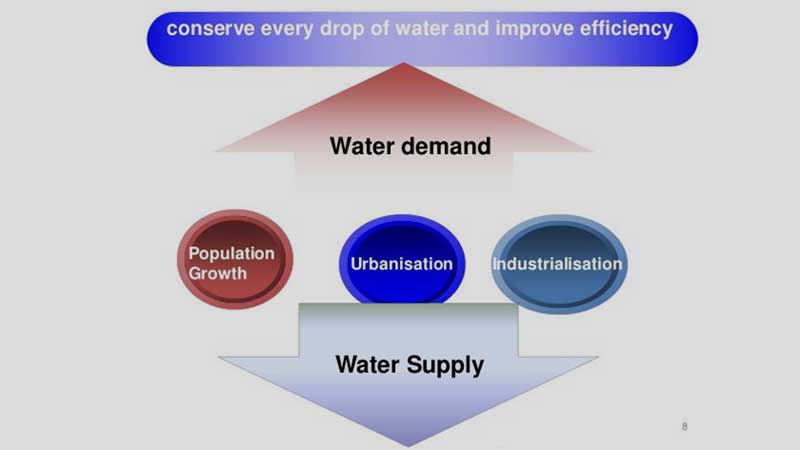
Clean drinking water is a precious commodity in most part of the world and the same is true for India. India which had abundance of water historically is facing a difficult challenge as millions of people are still deprived of piped water supply. The average annual per capita availability of water has reduced by almost 70% in a span of 60 years, from 5177 cubic meters in 1951 to 1545 cubic metres in 2011 and estimated to decline further to 1486 cubic meters in the current year.
India has ranked as the 46th highest risk country in the world in Water Stress Index 2019. It also suggest that 11 of India’s 20 largest cities like Delhi, Chennai, Agra, Jaipur, Ahmedabad, Indore, Kanpur, Nashik, Lucknow, Hyderabad, Bengaluru are facing extreme water risks. Seven other big cities are also at the high risk level.
India’s policy thinkers at Niti Aayog have also flagged the distressing situation of freshwater availability in the country. The report has identified that 600 million people (43% of the country’s population) is facing high-to-extreme water stress and 75% of households do not have drinking water facilities on their premises and 40% of India’s population will have no access to drinking water by 2030.
Water use efficiency in India is still much lower as compared to other countries. Agriculture sector in India withdraws about 80% of all water and the highest user of freshwater sources. The overall irrigation project efficiency in developed countries is 50–60% as compared to only 38% in India. It also uses more water per unit of production as an estimate suggest that the industrial plants in India consume about 2 to 3.5 times more water per unit of production than similar plants operating in other countries. Water use pattern for agriculture is different at global level as it varies from 21% in Europe to 82% in Africa and 81% in Asian countries with global average of 69%. The water usage for industrial and municipal purposes also differs between the continents. European nations use about 57% water for their industrial purposes compared to just 5% in Africa and 10% in Asia, whereas municipal usage of water differs from 9% in Asia to 22% in Europe against the world average of 12%.
NITI Aayog also identified the key issues related to water use efficiency in India. It has set out the 28 key performance indicators covering irrigation, drinking water and other water-related sectors. Critical areas such as source augmentation, major and medium irrigation, watershed development, participatory irrigation practices, sustainable on-farm water use practices, rural drinking water, urban water supply and sanitation, and policy and governance have been accorded high priority.
A well planned and properly defined policy intervention is needed to conserve, protect, and ensure affordable access to water with proper pricing, integration of environmental concerns into agriculture policy, information sharing, awareness and education, increasing financial support for infrastructure development and improved governance. The challenge lies not only in channelling treated used water back into the waterways, but also in processing it to be reused for other applications. There is a growing trend towards water reuse projects in Singapore, Australia, USA and Israel to deliver high-quality treated water that can be used to augment the potable water supply. India needs to follow the best practices from around the world to make water reuse a rewarding affair.